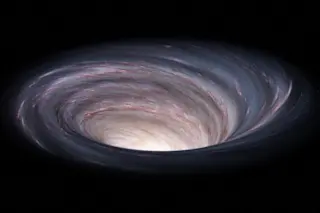At first glance, a swirling vortex of water seems similar to a black hole: Both take hold of the matter around them, sucking in and trapping whatever drifts too close. Well, it turns out the analogy is more than just skin deep. The oval boundary of water around a vortex in the ocean can be described with the same mathematical equations as the light that whips around the edges of a black hole.
Oceanic vortices are stealth forces of nature. They trap water and pollutants, and shuttle warm water northward — influencing the rate of melting sea ice. Even though they’re about 90 miles across, they are still relatively small features in the huge ocean, hard to detect in satellite data. George Haller, an applied mathematician at the Swiss university ETH Zürich, wanted to better understand their movement and characteristics, so he set out to describe the invisible barrier that ...













